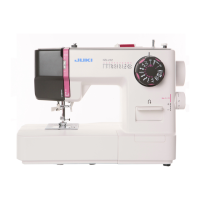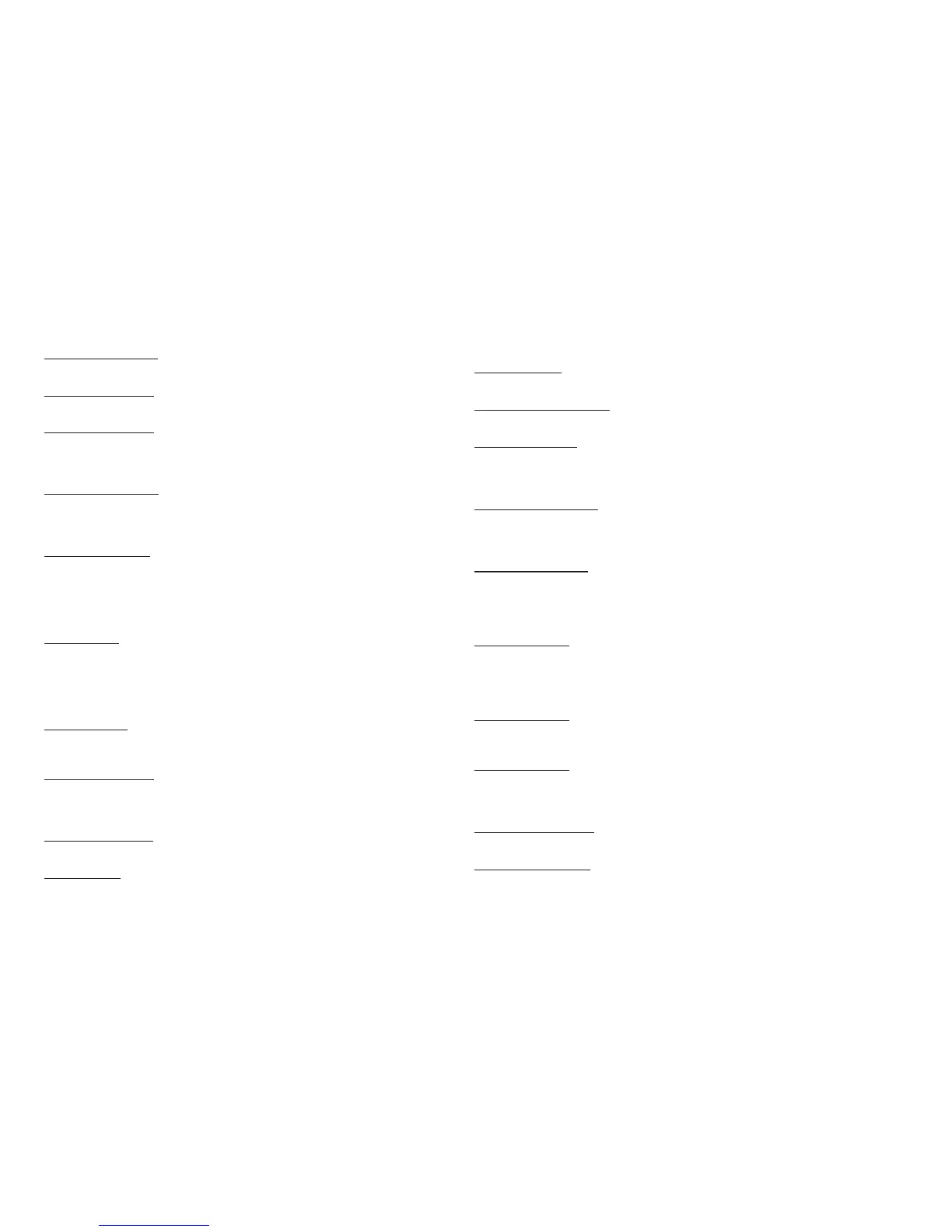44
CHECK CHART FOR PERFORMANCE PROBLEMS
GENERAL PROBLEMS
Machine does not sew.
* Foot controller is not connected (see page 9).
* Power switch is turned off.- Turn on the switch.
Machine jams/knocks.
* Thread is caught in shuttle.- Clean shuttle (see page 42 - 43).
* Needle is damaged.- Replace needle (see page 29).
Fabric does not move.
* Presser foot is not lowered - lower presser foot.
* Stitch length is set at 0. - Set it at 1 to 4.
STITCHING PROBLEMS
Machine skips stitches.
* Needle is not all the way up into needle clamp (see page 29).
* Needle is bent or blunt. - Replace needle (see page 29).
* Machine is not threaded correctly (see page 14).
* Thread is caught in shuttle. - Clean shuttle (see page 42 - 43).
Stitches are irregular.
* Needle size is not correct for thread and fabric (see page 27 - 28).
* Machine is not threaded correctly (see page 14).
* Top thread tension is too loose (see page 26).
* Fabric is being pulled or pushed against machine feeding action.
- Guide it gently.
* Bobbin has not been wound evenly. - Rewind bobbin.
Needle breaks.
* Fabric is being pulled or pushed against machine feeding action.
- Guide it gently.
* Needle size is not correct for thread and fabric (see page 27 - 28).
* Needle is not all the way up into the needle clamp (see page 27 - 28).
THREAD PROBLEMS
Thread bunches.
* Top and bobbin threads are not drawn back under presser foot before starting seam.
- Draw both threads back under presser foot about 6 inches (15cm) and hold
until a few stitches are formed.
Needle thread breaks.
* Machine is not threaded correctly (see page 14).
* Top thread tension is too tight (see page 26).
* Needle is bent. - Replace needle (see page 29).
* Needle size is not correct for thread and fabric - (see page 27 - 28).
Bobbin thread breaks.
* Bobbin case is not threaded correctly (see page 13).
* Lint accumulates in bobbin case or shuttle. - Remove lint (see page 42 - 43).
Fabric puckers.
* Top and bobbin thread tensions are too tight. - Adjust thread tensions (see page
26).
* Stitch length is too long for sheer or soft fabric. - Shorten stitch length.
CUADRO DE EXAMEN PARA LOS PROBLEMAS DE
EJECUCION
PROBLEMAS GENERALES
Máquina no cose.
* El cordón eléctrico no está conectado (vea página 9).
* El interruptor de potencia está desconectado. – Conectelo.
Máquina se atasca/rechina.
* El hilo está enredado en la lanzadera. – Limpiar la lanzadera (vea página 42 - 43).
* La aguja se rompe. – Reponer la aguja (vea página 29).
La tela no se mueve.
* El prensatelas no está bajado perfectamente. – Bajar el prensatelas.
* Longitud del punto es demasiado corto. – Prolonger la longitud del punto.
PROBLEMAS DE PUNTO
La máquina salta puntos.
* La aguja no está jada en la brida portaagujas (vea página 29).
* La aguja está torcida o obtusa. – Reponer la aguja (vea página 29).
* La máquina no enhebra correctamente (vea página 14).
* El hilo está enredado en la lanzadera. – Limpiar la lanzadera (vea página 42 - 43).
Puntos son irregulares.
* El número de la aguja no es correcto para el hilo ni el material (vea página 27 - 28).
* La máquina no enhebra correctamente (vea página 14).
* La tensión del hilo superior es demasiado oja (vea página 26).
* El material está tirado o empujado contra la acción de alimentación. – Guiario suavemente.
* La bobina no se ha devanado de un modo igual. – Redevanar la bobina.
La aguja se rompe.
* El material está tirado o empujado contra el acción de alimentación.
* El número de la aguja no es correcto para el hilo ni el material (vea página 27 - 28).
* La aguja no está jada en la brida portaagujas (vea página 27 - 28).
PROBLEMAS DE HILO
Los hilos se juntan.
* Los hilos superior e inferior no están sacados debajo del prensatelas antes de
empezar a coser, – Sacar ambos hilo debajo del prensatelas unos 10 cm y mantener
hasta que se formen unos pocos puntos.
La aguja se rompe.
* La máquina no enhebra correctamente (vea página 14).
* La tensión del hilo superior es demasiado apretada (vea página 26).
* La aguja está torcida. – Cambiar la agja (vea página 29).
* El número de la aguja no es correcto para el hilo ni el material (vea página 27 - 28).
El hilo inferior se rompe.
* La cápsula de portacanilla no enhebra correctamente (vea página 13).
* Las hilas se acumulan en la cápsula o en la lanzadera. – Quitarias (vea página 42 - 43).
La tela no queda plana.
* Las tensiones del hilo superior e inferior están demasiado apretadas. – Ajustar las
tensiones del hilo (vea página 26).
* La longitud del punto es demasiado largo para material no o suave. – Acortar la
longitud del punto.

